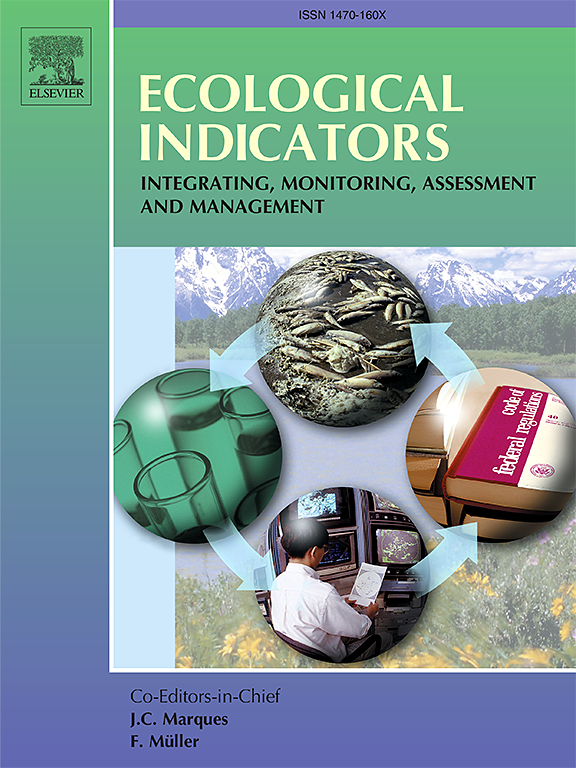How does agricultural resilience in China vary by region?
IF 7
2区 环境科学与生态学
Q1 ENVIRONMENTAL SCIENCES
引用次数: 0
Abstract
Understanding regional variation in agricultural resilience is crucial for promoting sustainable agricultural practices. However, research on the extent of agricultural resilience and its determinants in different regions of China remains limited. This study utilized data from the China Economic and Social Big Data Research Platform to extract relevant indicators, applied the entropy weight method to calculate indicator weights, and conducted an analysis of regional variations in agricultural resilience and its driving factors across 344 cities in China. The findings reveal a significant increase in agricultural resilience, rising from 0.158 to 0.330, with a consistent upward trend (P < 0.05). The spatial distribution of agricultural resilience demonstrates marked heterogeneity and clustering, with high-resilience areas predominantly concentrated in economically advanced coastal regions, while low-resilience areas are primarily located in less-developed western provinces. Key determinants of agricultural resilience include infrastructure, healthcare, education, technological advancements, and natural environmental factors, but the significance of these factors vary by region. This study underscores the necessity of region-specific strategies to enhance agricultural resilience, and emphasizes the integration of infrastructure development, localized agricultural education, and telemedicine systems to strengthen agricultural resilience. These findings offer insights for fostering resilient agriculture in China and other developing countries.

中国不同地区的农业恢复力有何差异?
了解农业恢复力的区域差异对于促进可持续农业实践至关重要。然而,对中国不同地区农业弹性程度及其影响因素的研究仍然有限。本研究利用中国经济社会大数据研究平台的数据提取相关指标,运用熵权法计算指标权重,对中国344个城市农业弹性的区域差异及其驱动因素进行了分析。研究结果显示,农业恢复力显著增加,从0.158上升到0.330,并呈持续上升趋势(P <;0.05)。农业弹性空间分布具有明显的异质性和集聚性,高弹性区主要集中在经济发达的沿海地区,低弹性区主要分布在经济欠发达的西部省份。农业恢复力的关键决定因素包括基础设施、医疗保健、教育、技术进步和自然环境因素,但这些因素的重要性因地区而异。本研究强调了提高农业适应力的区域战略的必要性,并强调了基础设施建设、本地化农业教育和远程医疗系统的整合来增强农业适应力。这些发现为在中国和其他发展中国家培育抗灾农业提供了见解。
本文章由计算机程序翻译,如有差异,请以英文原文为准。
求助全文
约1分钟内获得全文
求助全文
来源期刊

Ecological Indicators
环境科学-环境科学
CiteScore
11.80
自引率
8.70%
发文量
1163
审稿时长
78 days
期刊介绍:
The ultimate aim of Ecological Indicators is to integrate the monitoring and assessment of ecological and environmental indicators with management practices. The journal provides a forum for the discussion of the applied scientific development and review of traditional indicator approaches as well as for theoretical, modelling and quantitative applications such as index development. Research into the following areas will be published.
• All aspects of ecological and environmental indicators and indices.
• New indicators, and new approaches and methods for indicator development, testing and use.
• Development and modelling of indices, e.g. application of indicator suites across multiple scales and resources.
• Analysis and research of resource, system- and scale-specific indicators.
• Methods for integration of social and other valuation metrics for the production of scientifically rigorous and politically-relevant assessments using indicator-based monitoring and assessment programs.
• How research indicators can be transformed into direct application for management purposes.
• Broader assessment objectives and methods, e.g. biodiversity, biological integrity, and sustainability, through the use of indicators.
• Resource-specific indicators such as landscape, agroecosystems, forests, wetlands, etc.
 求助内容:
求助内容: 应助结果提醒方式:
应助结果提醒方式:


